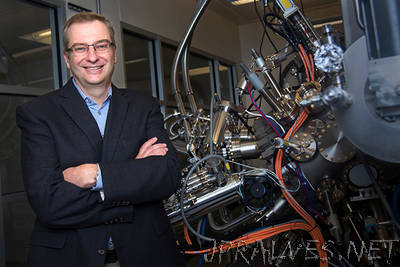
“That’s the forecast of Michael Manfra, Purdue University’s Bill and Dee O’Brien Chair Professor of Physics and Astronomy, Professor of Materials Engineering and Professor of Electrical and Computer Engineering, on a new long-term enhanced collaboration between Purdue and Microsoft Corp. to build a robust and scalable quantum computer by producing what scientists call a “topological qubit.” Purdue President Mitch Daniels noted that Purdue was home to the first computer science department in the United States, and says this partnership and Manfra’s work places the university at the forefront of quantum computing. “Someday quantum computing will move from the laboratory to actual daily use, and when it does, it will signal another explosion of computing power like that brought about by the silicon chip,” Daniels says. “It’s thrilling to imagine Purdue at the center of this next leap forward.” In the computers that we currently use every day, information is encoded in an either/or binary system of bits, what are commonly thought of as 1s and 0s. These computers are based on silicon transistors, which, like a light switch, can only be in either an on or off position. With quantum computers, information is encoded in qubits, which are quantum units of information. With a qubit, however, this physical state isn’t just 0 or 1, but can also be a linear combination of 0 and 1. Because of a strange phenomenon of quantum mechanics called “superposition,” a qubit can be in both states at the same time. This characteristic is essential to quantum computation’s potential power, allowing for solutions to problems that are intractable using classical architectures.”
